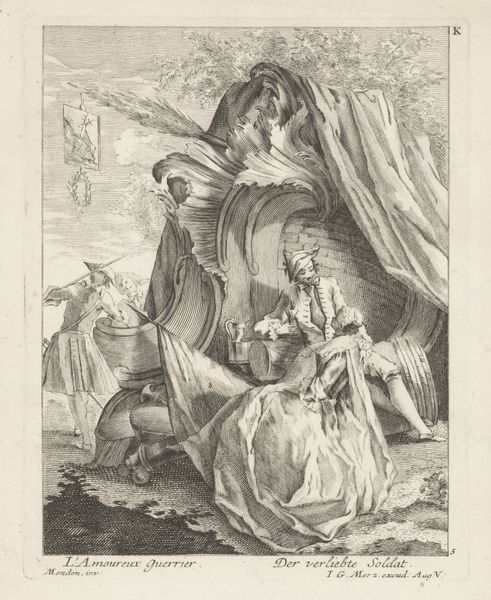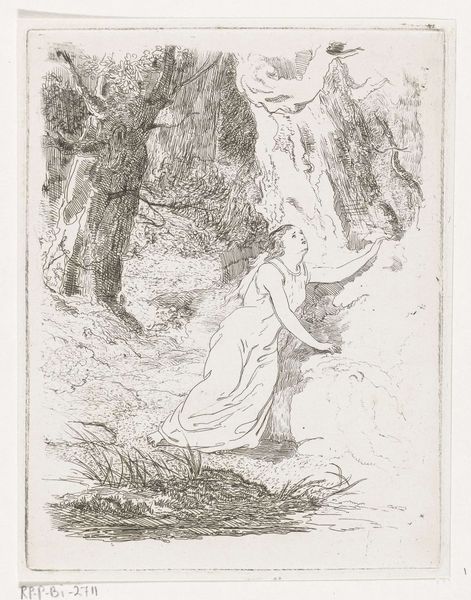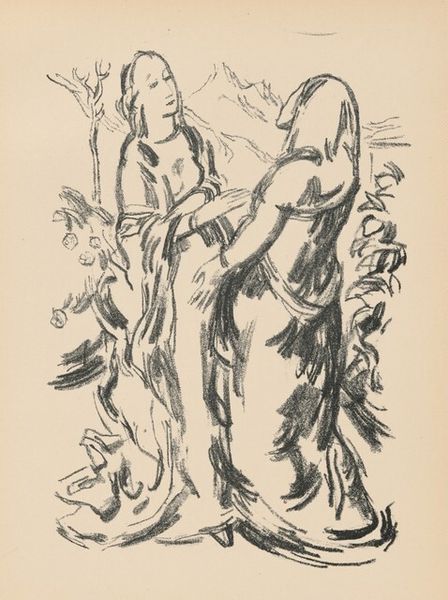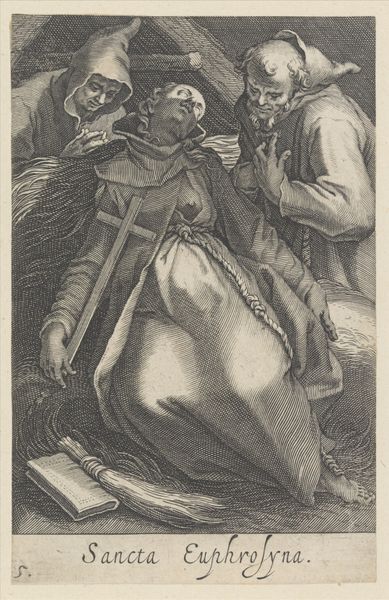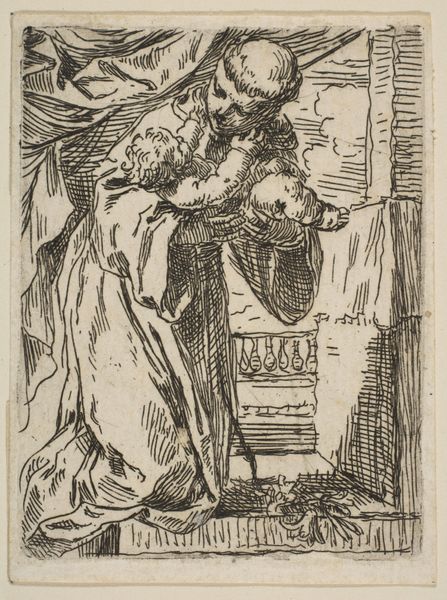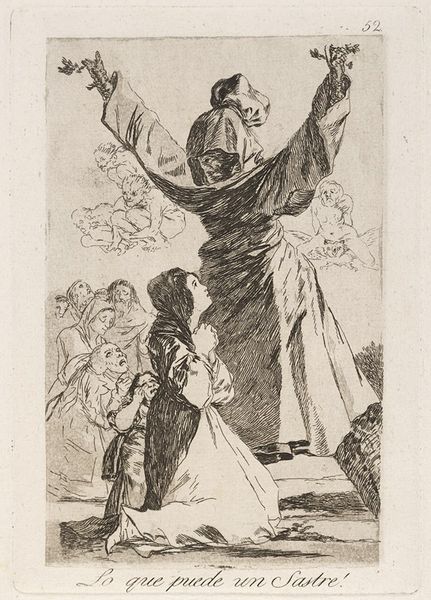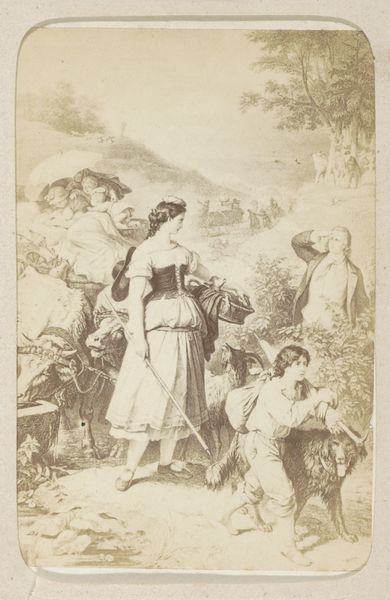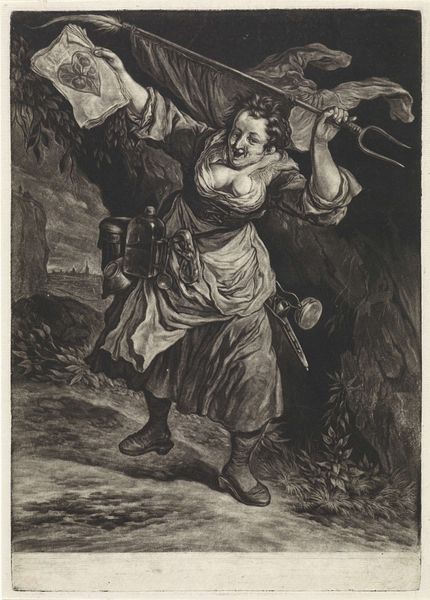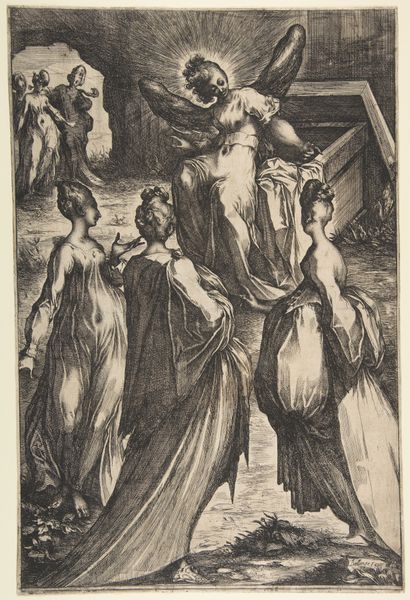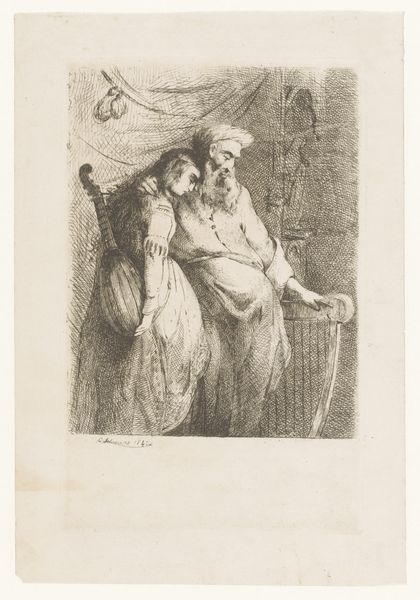
drawing, ink, poster
#
drawing
#
narrative-art
#
figuration
#
ink
#
line
#
history-painting
#
academic-art
#
poster
#
modernism
Copyright: Public Domain: Artvee
Editor: This drawing, "Can you drive a car," was created around 1917 by Charles Dana Gibson. It's an ink drawing and was reproduced as a poster, so the sharp linework really stands out. I'm immediately struck by the strong, almost classical figure and how she contrasts with the urgency implied by the title. What compositional elements draw your attention most? Curator: The formal composition presents a fascinating interplay. Gibson has masterfully employed line to create depth and volume, particularly in the draped figure. Observe how the density of the lines and cross-hatching contribute to the figure's substantial form, juxtaposed with the more open, linear treatment of the background. The tension arises from this contrast and the figure’s diagonal thrust, almost as if emerging from the picture plane. Editor: So you're saying the figure, with its defined lines, is meant to feel very present and dynamic? Curator: Precisely. And further, how does the textual element interact with the visual? The textual query is not merely a functional caption; it initiates a structural dialogue. Editor: I see! The direct question draws the viewer into the image's narrative, it demands participation. But I guess I hadn't thought about that as a conscious compositional choice. Curator: Indeed. Gibson uses a visual grammar where each element—figure, line, text—functions to construct a particular message. And we must recognize how the materiality of ink drawing further serves this end. It emphasizes clarity and immediacy. Editor: Looking at it this way, the drawing is doing a lot more than just relaying information, the execution itself carries so much meaning! Curator: Exactly! Close observation reveals the artist’s conscious arrangement, prompting us to analyze further and expand our understanding.
Comments
No comments
Be the first to comment and join the conversation on the ultimate creative platform.
